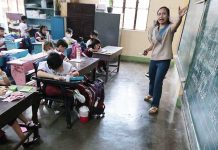
[av_one_full first min_height=” vertical_alignment=” space=” custom_margin=” margin=’0px’ padding=’0px’ border=” border_color=” radius=’0px’ background_color=” src=” background_position=’top left’ background_repeat=’no-repeat’ animation=”]
[av_heading heading=’EDITORIAL’ tag=’h3′ style=’blockquote modern-quote’ size=’30’ subheading_active=’subheading_below’ subheading_size=’15’ padding=’10’ color=” custom_font=”][/av_heading]
[av_textblock size=” font_color=” color=”]
Sunday, October 29, 2017
[/av_textblock]
[av_image src=’http://www.panaynews.net/wp-content/uploads/2017/10/editorial-cartoon-for-oct29.jpg’ attachment=’122103′ attachment_size=’full’ align=’center’ styling=” hover=” link=” target=” caption=” font_size=” appearance=” overlay_opacity=’0.4′ overlay_color=’#000000′ overlay_text_color=’#ffffff’ animation=’no-animation’][/av_image]
[av_textblock size=’18’ font_color=” color=”]
DO YOU KNOW that the Philippines is among the top countries successful in empowering women and addressing issues on gender gap?
The country has been consistently at the top tier in the gender equality index. In the yearly Global Gender Gap Report by the World Economic Forum, the Philippines is always at the top 10 countries globally. In 2016, the Report showed the Philippines closing nearly 79 percent of its gender gap, ranking first in Asia and seventh worldwide among 144 countries.
We have crafted effective laws on gender equality and women empowerment, and the implementation of these policies are improving through the years. These include the Magna Carta of Women, Anti-Violence Against Women and Children Act, the Anti-Trafficking in Persons Act and its expanded version, and the Domestic Workers Act.
The Philippines can lead the global effort to close gender gap. We can share with other countries our best practices on women empowerment as well as our laws which can be used as guide by other nations in crafting policies on gender equality.
One of the important steps is to capacitate women as part of the overall strategy on disaster risk reduction and management. Women are disproportionately affected by disasters because they have distinct needs that are not sufficiently addressed. To empower women is to reduce their vulnerability. This way, we have less victims of disasters and more leaders of resilience.
But greater support must be given to women in rural communities, especially housewives who want to explore opportunities for additional income for their families. Women should have access to capital for microenterprises for economic empowerment. We need to provide viable income alternatives to women and allow them to participate in livelihood and other economic activities.
Providing opportunities for women in education, in the workplace, in rural development, in governance and leadership roles, and ensuring that their special needs are addressed, would not only result in gender empowerment but also contribute to poverty alleviation and economic growth.
[/av_textblock]
[/av_one_full]







